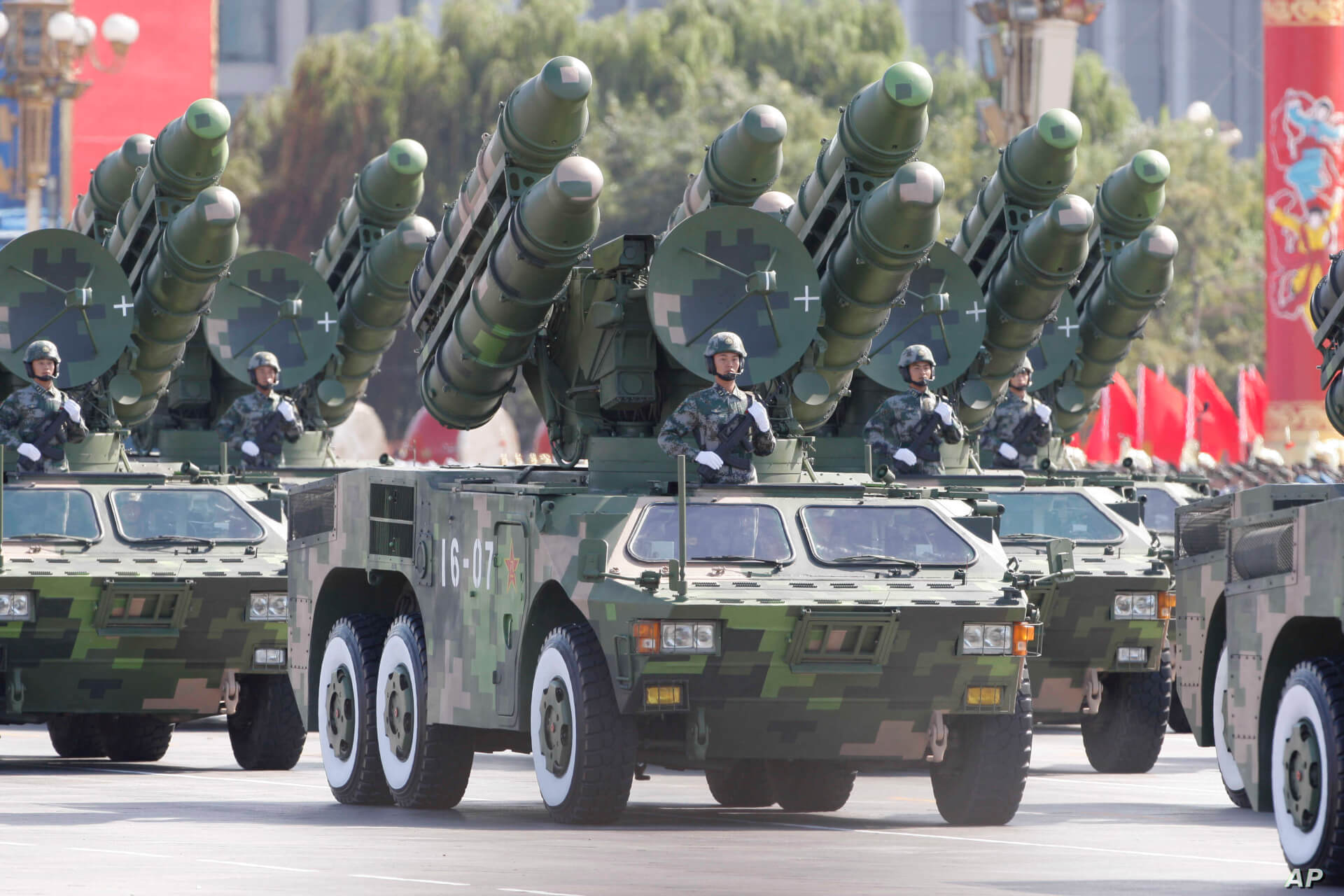A report by the Bulletin of Atomic Scientists published on Thursday estimates that the People’s Liberation Army (PLA) has increased its ballistic missile brigades by a third in only the past three years, while its relationship with the United States (US) becomes increasingly hostile.
The study estimated that China, who has been working on bettering its nuclear strike capabilities, now has approximately 350 nuclear warheads, 272 of which are “for delivery by more than 240 operational land-based ballistic missiles, 48 sea-based ballistic missiles, and 20 nuclear gravity bombs assigned to bombers”. It also has 40 brigades, a 35% increase compared with 2017 numbers, with more under development.
The report further estimated that about 50% of the brigades had launchers for ballistic or cruise missiles and that this number was likely to grow when the construction of further missile bases is completed. 12 of these brigades are reportedly based in territories that China has high conflict in—the South China Sea (SCS) and the Taiwan Strait. Beijing’s view of Taiwan as a breakaway province is that the autonomous region is not a separate nation, but rather is a part of China. Meanwhile, The SCS region is disputed by multiple maritime states due to Beijing’s controversial nine-dash line, claiming nearly all of the sea’s 1.3 million square miles as its own. This has prompted the administration in Beijing to ramp up security near the two regions.
This increase has triggered widespread suspicion regarding China’s nuclear ambitions. The report cited a Trump administration official who went as far as to suggest that “China no longer intends to field a minimal deterrent,” but instead strives for “a form of nuclear parity with the United States and Russia”. Given these figures, the United States does not rule out the possibility that “China could have conducted activities at its test site that are inconsistent with its moratorium commitment”. The “moratorium commitment” refers to the Comprehensive Test Ban Treaty (CTBT), which China has signed but not ratified. Therefore, even if China did conduct a few very low-yield nuclear tests, it would have essentially violated its security responsibility mandated by the CTBT.
The CTBT, which was launched in September 1996, aims to prevent nuclear weapons proliferation and promotes the process of nuclear disarmament by banning the production of fissile material for anything other than verified peaceful uses. It is an important multilateral step towards the complete prohibition and thorough destruction of nuclear weapons. In early 2011, during then Chinese President Hu Jintao’s official state visit to Washington D.C., the US and China released a joint statement declaring that “both sides support early entry into force of the Comprehensive Nuclear-Test-Ban Treaty” and “agreed to work together to achieve this goal.” Despite this, the National People’s Congress (NPC) and the US Senate are both yet to ratify this treaty to make it official.
China Increases Ballistic Missile Brigades by a Third in Three Years
A report revealed that the Chinese military has drastically increased its number of ballistic missiles over the past three years which has greatly strengthened its nuclear strike capability.
December 14, 2020

SOURCE: AP2009
